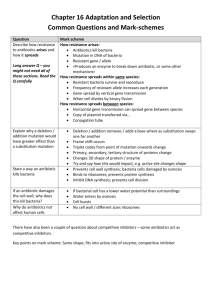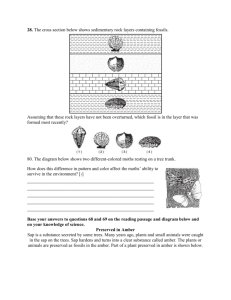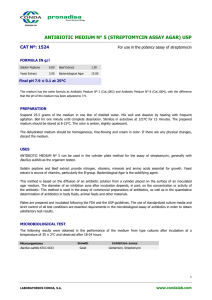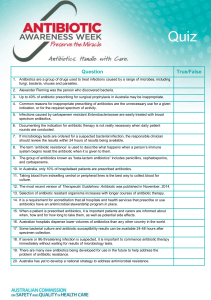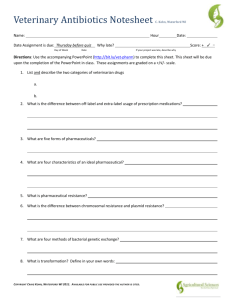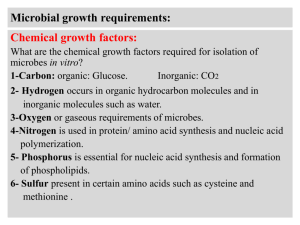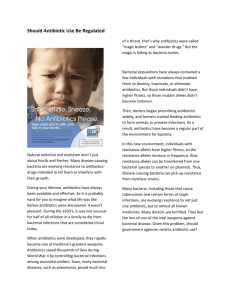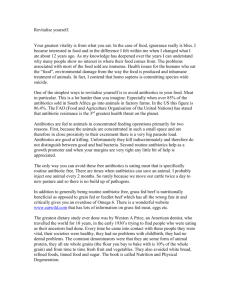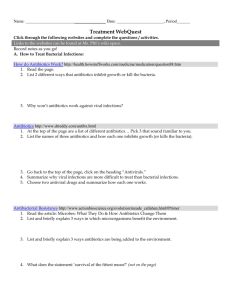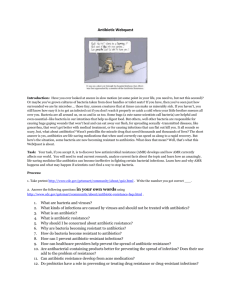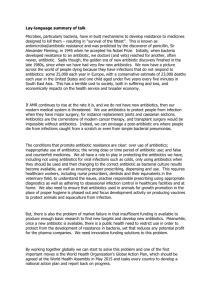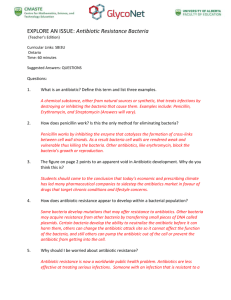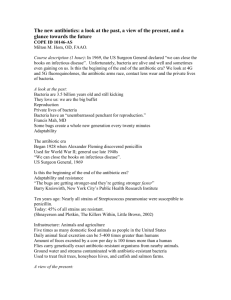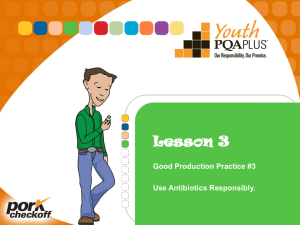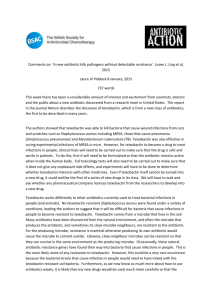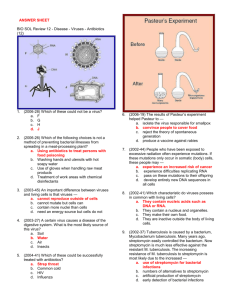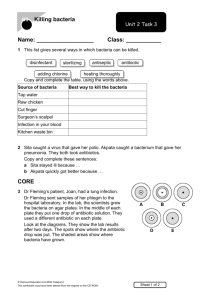How Antibiotics Work PPT
advertisement
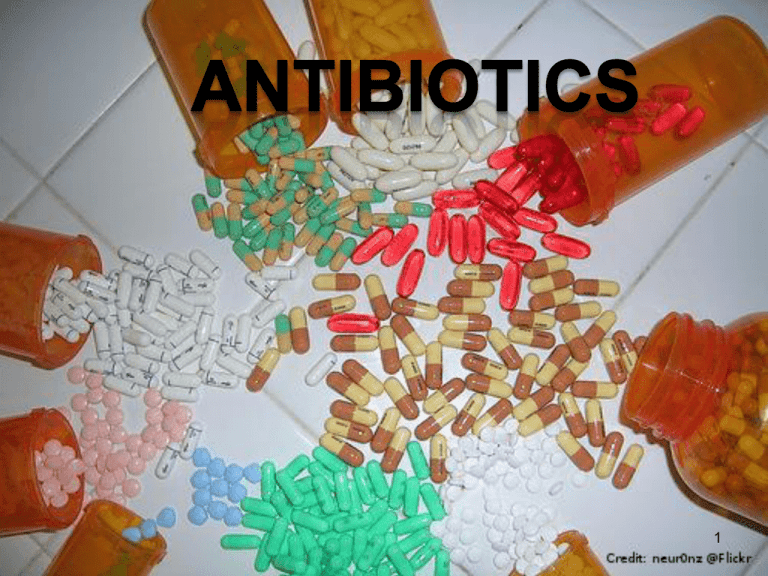
1 Learning Targets • What are antibiotics? • Where do they come from? • How does our antibiotic, streptomycin, kill bacteria? 2 Discovery of Antibiotics In 1928, Alexander Fleming discovered the first antibiotic. A fungus (Penicillium) inhibited the growth of… A bacterium (Staphylococcus) 3 What are Antibiotics? • Some organisms make and secrete chemicals that inhibit the growth of other organisms. • These chemicals are called, “antibiotics,” meaning “against life.” • We use antibiotics to stop bacterial infections in humans. 4 How do Antibiotics Work? • To be useful to humans, the antibiotic must have selective toxicity. • It must prevent the growth of some organisms (bacteria) but not harm or prevent the growth in other organisms (humans). 5 Criteria for Antibiotic Targets • Target needs to be a structure, enzyme or chemical pathway that humans do not have. 6 Return to Worksheet Cell Wall Cell membrane Cytoplasm Ribosomes Plasmid Pili Flagellum Chromosome 7 Check Points • What bacterial cell structures might be good targets for antibiotics? 8 Possible Targets • Cell wall synthesis • Protein synthesis – bacteria ribosomes are different from human ribosomes • DNA replication – enzymes are different. 9 How does our antibiotic, streptomycin, work? • Inhibits protein synthesis during translation. mRNA Ribosome 10 How does our antibiotic, streptomycin, work? • Streptomycin binds to the bacterial ribosome and changes the ribosome shape slightly. • The wrong tRNA can attach so the mRNA is mis-read. • A random, non-functional protein is made. • End result: Bacteria dies. 11 Review • What are antibiotics? • Where do they come from? • How do our antibiotic, streptomycin, work? 12 2. How and Why do bacteria become resistant? 13




